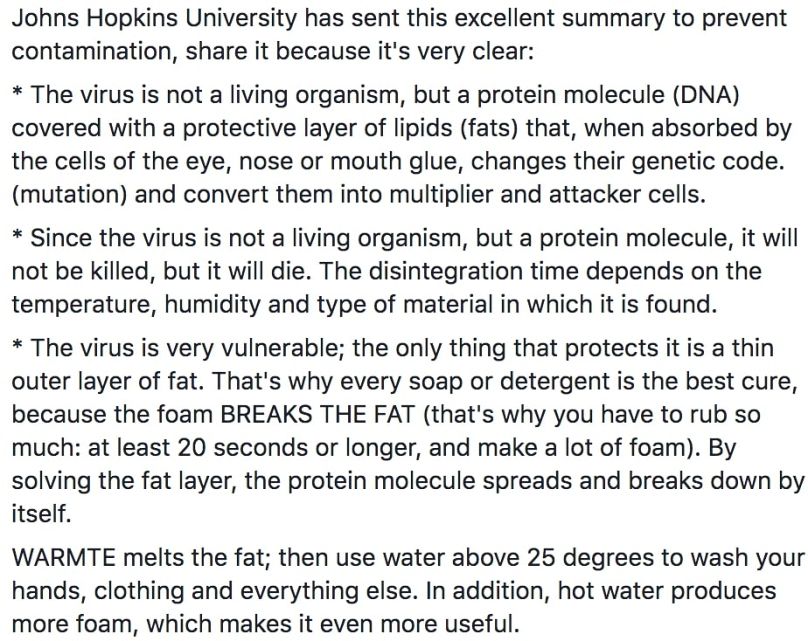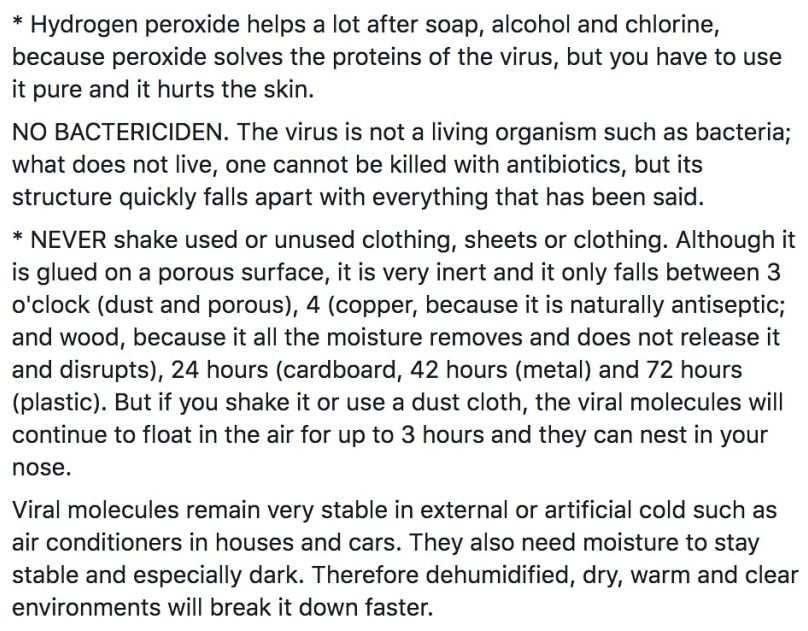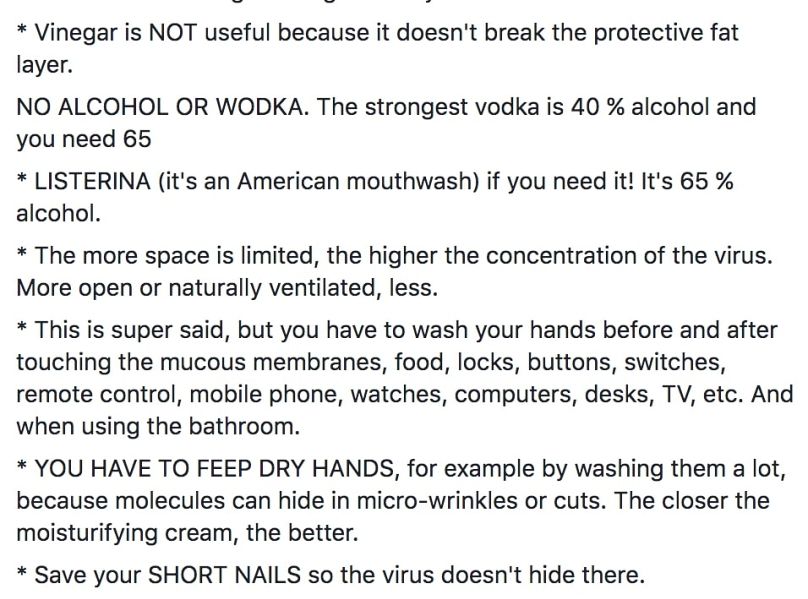This widely circulated social media post claims to contain coronavirus advice from the respected Johns Hopkins University. It doesn't and it's full of misinformation.
A widely circulated social media post claiming to be an "excellent summary" of how to prevent COVID-19 is full of misinformation.
It claims to be from the US-based Johns Hopkins University, which has been at the forefront of publishing up-to-date information about the pandemic, including an interactive map that is often cited by scientists, politicians and journalists alike.
But Euronews has established the post - which includes advice such as using Listerine as a disinfectant - has nothing to do with the university.
"This is not something produced by Johns Hopkins Medicine," the university said. "We have seen rumours and misinformation about COVID-19 citing our experts and circulating on social media, and we have received several inquiries from the general public about these posts. We do not know their origin and they lack credibility."
There are many concerning elements to this post, according to Dr Jason Kindrachuk, assistant professor of viral pathogenesis at the University of Manitoba. Not only does the post wrongly attribute to a credible source, but there is a grain of truth amid the misinformation.
What kind of information is incorrect within the post?
"The issue is what we are seeing is that people are becoming a little bit more clever. So they put in just enough information that is valid to then, for some reason, put in a lot of other theories that really have no sign of relevance," Dr Kindrachuk said.
The post begins with discussion about SARS-CoV-2, calling it a "protein virus" which is made of DNA.
"That is completely inconsistent with what this virus is," Dr Kindrachuk said, adding the structure does not contain DNA.
"If you start to see information where, you do a basic Wikipedia search, or you look at a different research site, or scientific journal sites, the information about the virus itself doesn't match what is on the post, that should set off some alarm bells that something isn't correct."
'We won't know this kind of information unequivocally for quite a period of time'
The post also details how the virus reacts in temperature and sunlight, linking vaguely to research, but taking it out of context.
"There is this idea of a temperature component, and the relation of sunlight to the stability of the virus," said Dr Kindrachuk.
"There is just enough in there that makes it sound like it's true, but we don't know. And I think that is the issue. Right now, we understand very little about this virus, but we understand enough to know that it seems to, from a stability stand point if it's on a surface, it seems to do better at colder temperatures and lower humidity."
There has been research released about how the virus reacts in different conditions, from pH to temperature. Many such studies have yet to be peer reviewed. In addition, "we don't know how that extends out to the real world".
"All of those experiments have been done within a laboratory," said Dr Kindrachuk; "So the idea that, we can take those principles and say 'as long as it's in the sunlight and it's warm and it's humid out, the virus will be inactivated, we don't know that. We're three months into a pandemic, we won't know this kind of information unequivocally for quite a period of time."
A hint of truth amid the misinformation
The hint of validity amid the misinformation is what makes a post such as this even more concerning. The post urges people not to shake "used or unused clothing" for fear that this could generate aerosols or particles that lead to infection.
"Again, there is a hint of truth underneath," Dr Kindrachuk said.
"According to the latest research, the virus can be transmitted through respiratory droplets that can be transmitted over short distances. We also know that the virus can be stable on material such as clothing for hours.
"But when you start putting the two together and saying, 'if you shake a piece of cloth and there is virus on it, that will lead to infection', we don't know that information.
"We are going to find out more information on how it is transmitted over time but as of know, what is known with certainty is how the likes of coughing or sneezing can spread the virus through droplets. This links to how scientific research moves, with the release of research and the peer review process."
Listerine vs vodka: both are ineffective as detergents
The post also seemingly gives advice for people to use Listerine rather than vodka as a disinfectant - however both are ineffective. Both the European Centres for Disease Prevention and Control (ECDC) and the United States Centres for Disease Control (CDC) have issued guidance on specific concentrations needed to disinfect surfaces.
"Those are the pieces of information we should look at. And they simply don't match up with what was found within the Facebook post," Dr Kindrachuk added.
"As somebody who runs a lab in emerging viruses, and who works with coronavirus and Ebola, and everything under the sun, what we can say is that there are very definitive concentrations of alcohol that are required for inactivating viruses," Dr Kindrachuk told Euronews.
This post shrouds misinformation in a format that may seem credible in what is the latest turn in the so-called infodemic. The WHO and the European Commission are urging people to follow the advice of local governments, as well as guidance issued directly from reputable organisations, and to avoid sharing information from dubious sources.














